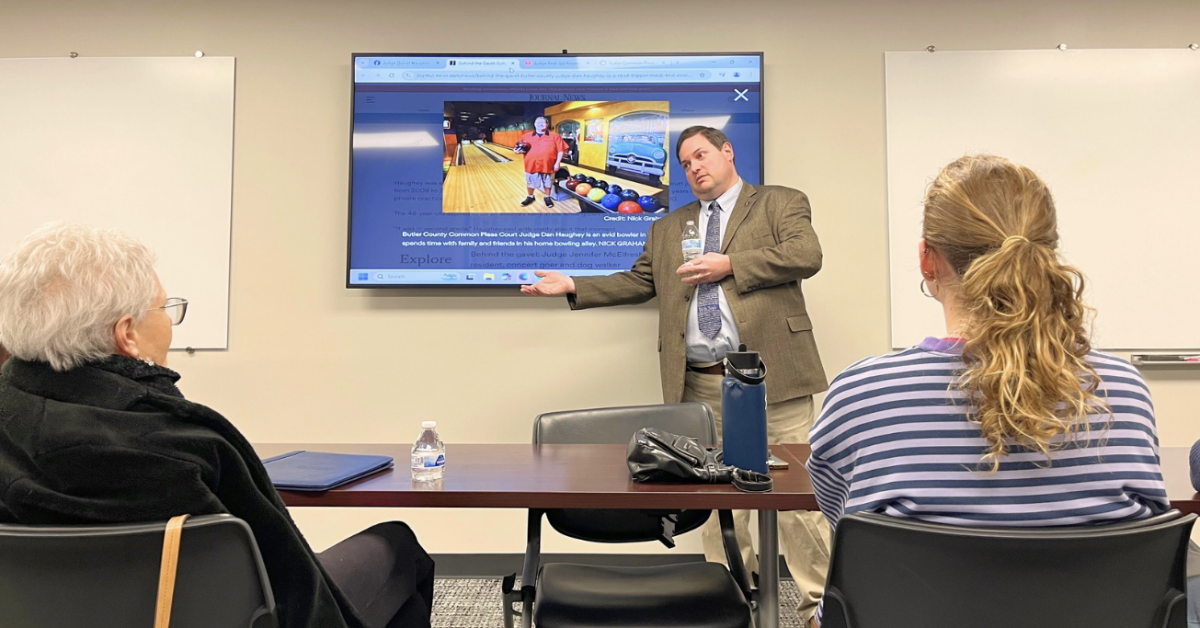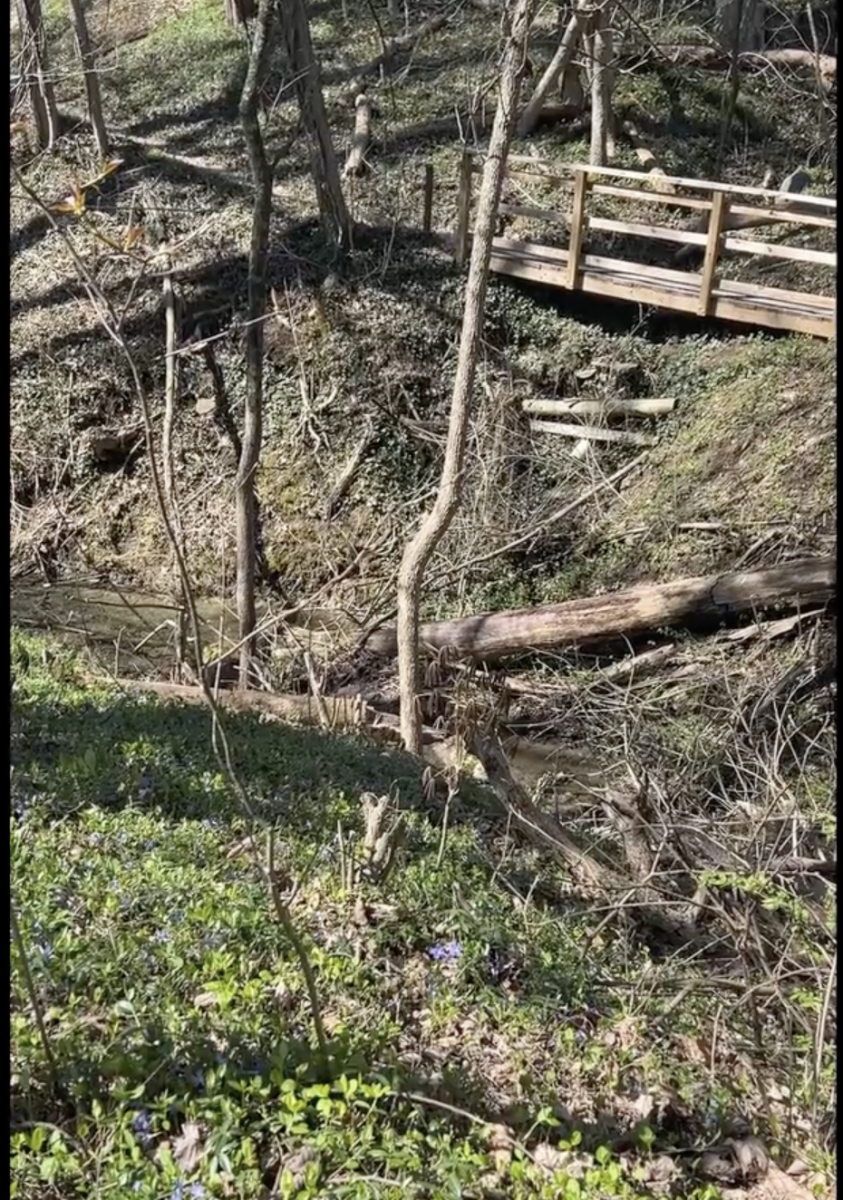The installation of painted bike boxes on the pavement at two intersections on Locust Street is the newest development in a long-term plan to make alternative transportation more viable in Oxford.
The green boxes are painted at the intersections of Locust Street and Bishop Square, and Locust Street and Spring Street. When the light is red, cyclists should stop in the box in front of any cars. Cars should stay behind the boxes. When the light turns green, cyclists go first before cars proceed into the intersection. Due to the change, turning right on red is no longer allowed for cars at these intersections, even if there are no cyclists in the boxes.
“Everything is [about] safety,” said Victor Popescu, city engineer. “This is probably our most congested area in town [besides] High Street.”
The bike boxes are meant to protect both cyclists and pedestrians, as well as slow down motorists approaching the intersections. They enable cyclists to more safely make a left hand turn, lets them go first to reduce the chance of an accident, and protects pedestrians on the crosswalks by putting more distance between them and the stopping point for cars.
“It gives the bicyclists a fighting chance in the midst of the traffic flows,” said City Councilor David Prytherch, who was involved with the planning of the project. “[And] I think pedestrians will be the primary beneficiaries of the bike boxes.”
The bike boxes are the result of findings reported in the transportation segment of Oxford’s Comprehensive Plan, a broad policy document formed in conjunction with the city government and residents to guide the community’s long-term goals. Prytherch was part of the planning commission of this plan.
“Participants expressed the desire to improve transportation options available to local
residents. The public’s comments focused on alternative modes of transportation
such as pedestrian travel, bike paths, and available public transportation,” the plan reads.
The plan was adopted in 2008, and since then there have been multiple projects working towards improved and safer transportation. Locust Street is a major area of concern for pedestrians, according to City Councilor David Prytherch, so since the adoption of the plan the city has marked a crosswalk to the library, installed pedestrian beacons at crosswalks and invested in sidewalk improvements on the east side.
The city has also been gradually adding bike lanes alongside resurfacing projects. This has been part of the Complete Street Corridor Safety Improvement Plan, a plan formed in response to the findings of the Comprehensive Plan to make Oxford’s streets “complete”, so that they better serve all users.
“Part of that plan is to try to implement bike lanes in other areas of town, but that’s going to be in conjunction with the resurfacing program,” Popescu said.
Reaction from the community to the installation of the bike boxes has been mixed. Some residents on Facebook say that the additions make driving at those intersections more inconvenient. Prytherch does not deny this.
“At the core of it is, how do you weigh the safety of all users, including pedestrians and bicyclists, against the convenience of drivers?” Prytherch said. “In the past it was all about the convenience of drivers… we’re slowly moving towards a more equitable approach that provides safety for everybody.”
However, the biking community has responded positively, appreciating the protection it provides cyclists.
“I tend to avoid Locust, but with [the bike boxes] there I might bike there if I had to,” said Grace Huddleston, a Miami student and employee at BikeWise bicycle shop uptown. “I think once people get used to it, it’ll be great.”
There are currently no official plans about what comes next in the implementation of the “Complete Streets” and Multi-Use Paths in Oxford Plan, according to Popescu, although such projects will continue to align with the resurfacing of the streets.










